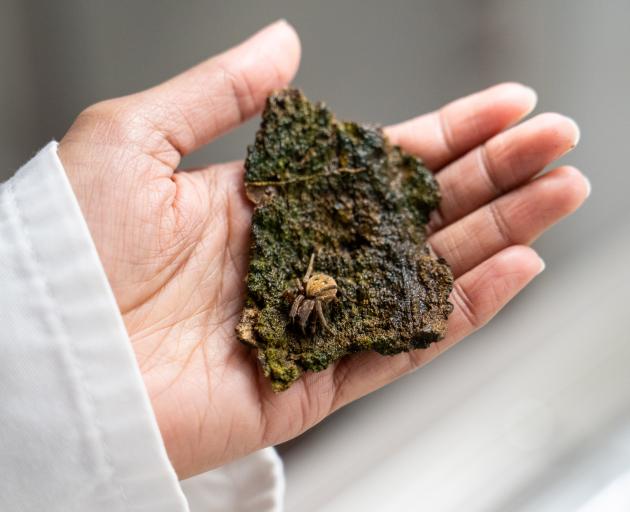Science
Parasitic Worms Transform Spiders into ‘Zombies’, Research Reveals

A fascinating yet alarming phenomenon is unfolding in New Zealand, where parasitic worms known as mermithids are transforming spiders into what researchers describe as “zombies.” Usha Mendis, a PhD student at Lincoln University, is dedicated to uncovering the intricacies of this unsettling relationship between the nematodes and their arachnid hosts.
Mendis is investigating how these parasitic worms infect various invertebrates, including spiders, caddisflies, and grasshoppers. So far, her research has identified three distinct spider species carrying the mermithids, raising concerns about the potential impact on local ecosystems. “New Zealand has a large number of endemic spiders; over 90% of them are unique to this region,” Mendis noted. She stressed the importance of these spiders in maintaining biodiversity, stating that their decline could have significant repercussions.
The process by which the mermithids exploit their hosts is both slow and fatal. Spiders infected with the nematodes exhibit physical changes, often developing larger and thicker limbs. “They can be very abnormal. Their legs get shorter but thicker, and the abdomen swells,” Mendis explained. “They look like zombies.” While these signs can indicate an infection, the definitive proof comes only after the spider dies and the nematode emerges to continue its life cycle.
The lifecycle of mermithids remains partially shrouded in mystery. Researchers understand how the nematodes exit their hosts, but the method of entry into the spiders is still under investigation. Mendis emphasizes that the worms depend on spiders for a critical phase of their existence. “They can’t live without a host. They consume the energy and nutrients of the host, and grow inside it,” she clarified.
Moisture plays a crucial role in the nematodes’ lifecycle. They manipulate the spiders to seek out damp environments, where they can grow, mate, and lay eggs. This often leads to unfortunate outcomes for the spiders, which are frequently found drowned. Even if an infected spider survives the emergence of the nematode, it is likely to die shortly thereafter.
To study the mermithids further, Mendis is employing water traps to capture the nematodes, a method that could provide more insight into their lifecycle and behavior. Despite the fact that mermithids were first reported in New Zealand just 35 years ago, much remains unknown about their interactions with local spider populations.
Mendis urges the public to reconsider their perceptions of spiders, which often provoke fear and misunderstanding. “Spiders may look disruptive and creepy, but they’re not the enemy,” she stated. “They’ve got their own problems to deal with.” As her research continues, Mendis hopes to shed light on the complexities of these relationships and the implications for New Zealand’s unique biodiversity.
-

 World1 week ago
World1 week agoPrivate Funeral Held for Dean Field and His Three Children
-

 Top Stories2 weeks ago
Top Stories2 weeks agoFuneral Planned for Field Siblings After Tragic House Fire
-

 Sports3 months ago
Sports3 months agoNetball New Zealand Stands Down Dame Noeline Taurua for Series
-

 Entertainment3 months ago
Entertainment3 months agoTributes Pour In for Lachlan Rofe, Reality Star, Dead at 47
-

 Entertainment2 months ago
Entertainment2 months agoNew ‘Maverick’ Chaser Joins Beat the Chasers Season Finale
-

 Sports3 months ago
Sports3 months agoSilver Ferns Legend Laura Langman Criticizes Team’s Attitude
-

 Sports1 month ago
Sports1 month agoEli Katoa Rushed to Hospital After Sideline Incident During Match
-

 World3 weeks ago
World3 weeks agoInvestigation Underway in Tragic Sanson House Fire Involving Family
-

 Politics2 months ago
Politics2 months agoNetball NZ Calls for Respect Amid Dame Taurua’s Standoff
-

 Top Stories2 weeks ago
Top Stories2 weeks agoShock and Grief Follow Tragic Family Deaths in New Zealand
-

 Entertainment3 months ago
Entertainment3 months agoKhloe Kardashian Embraces Innovative Stem Cell Therapy in Mexico
-

 World4 months ago
World4 months agoPolice Arrest Multiple Individuals During Funeral for Zain Taikato-Fox

















